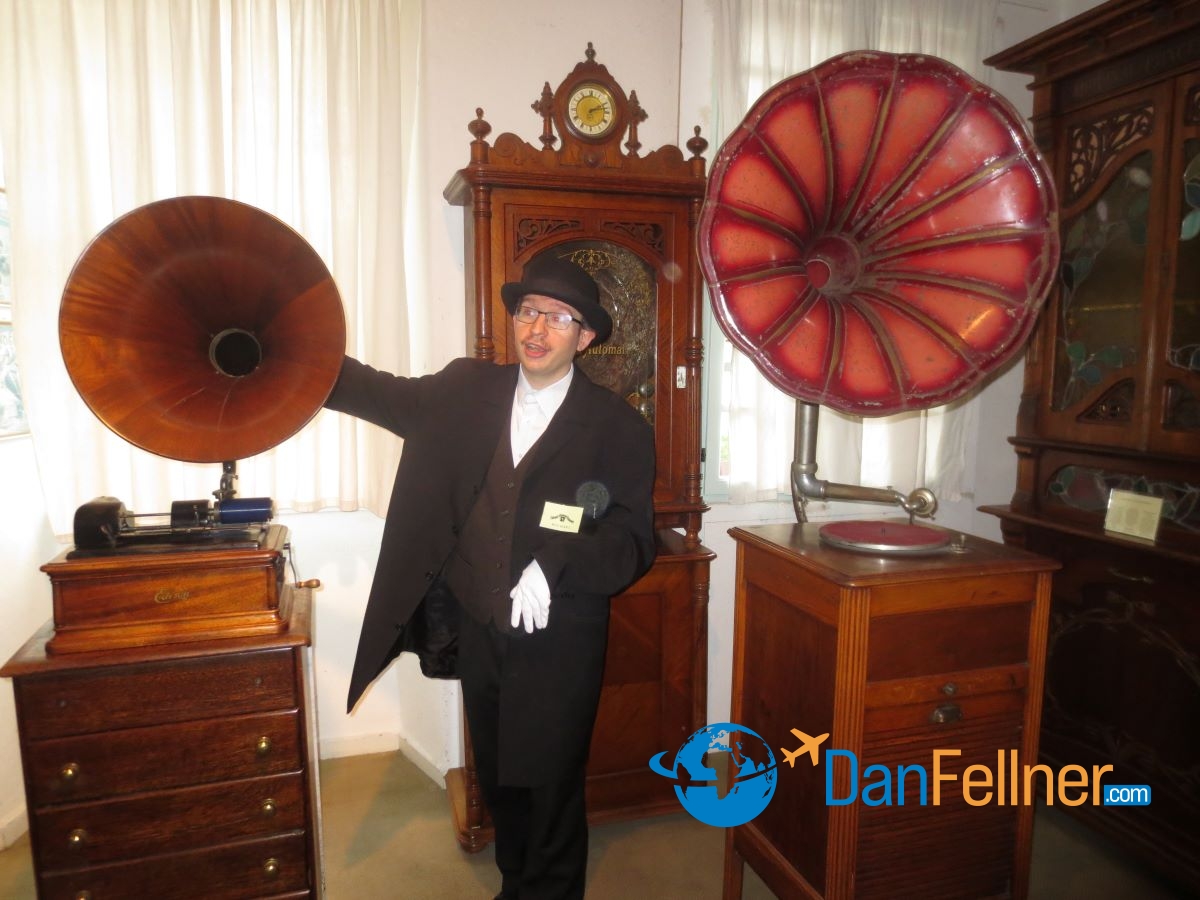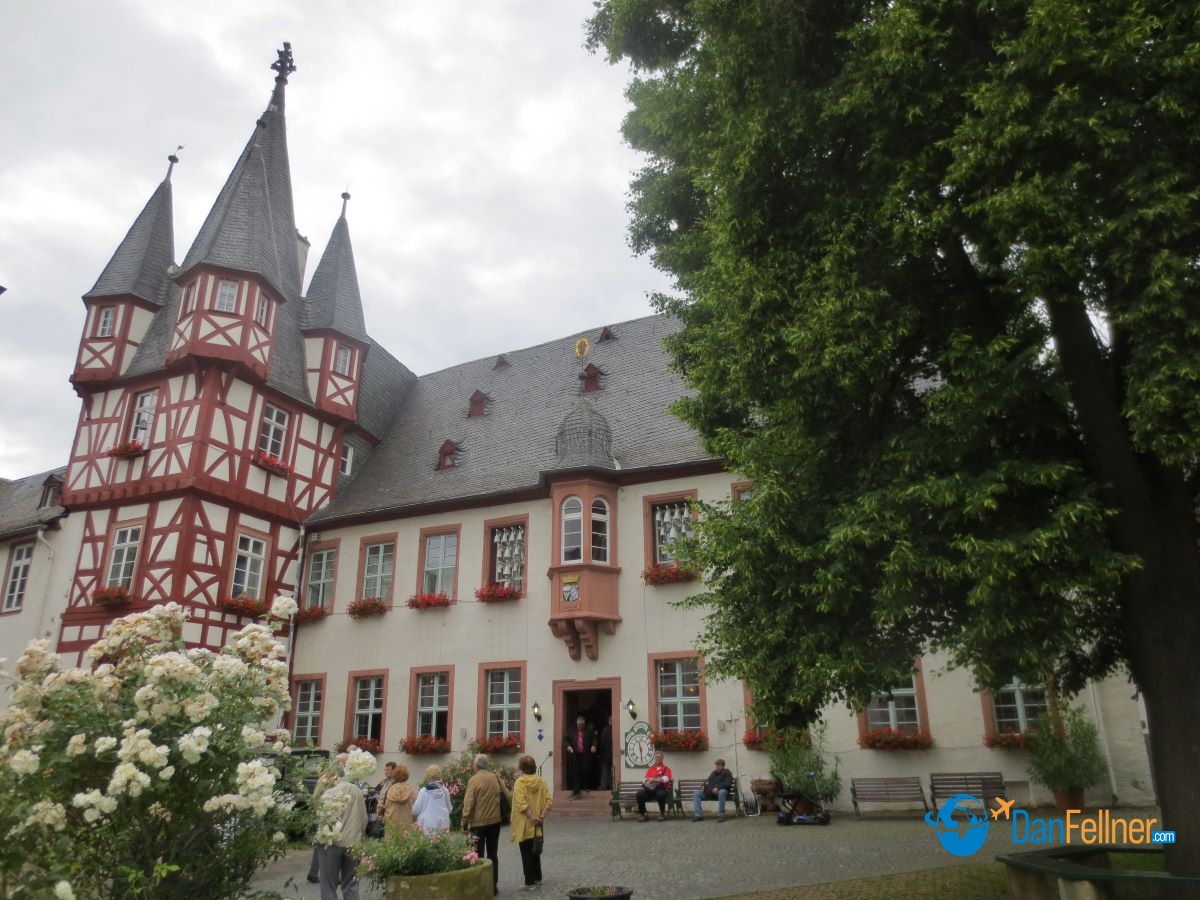At Siegfried’s museum in Rüdesheim: “Your ears will be all eyes”
The Arizona Republic — August 14, 2016
RÜDESHEIM, Germany – The quirky and unique Siegfried’s Mechanical Music Cabinet isn’t just a Disneyland for music aficionados, computer nerds or history buffs.
It’s a playground for almost anyone who enjoys watching and hearing extraordinary contraptions make utterly splendid sounds.

A guide turns on the “Phonoliszt-Violina,” the most popular attraction at Siegfried’s Mechanical Music Cabinet.
The museum, set in a 15th-century former knight’s manor called Brömserhof in the German wine-producing village of Rüdesheim on the Rhine River, attracts about 140,000 visitors each year. That’s 14 times the size of the local population.
Siegfried’s showcases about 350 mechanical instruments, making it one of the largest collections of self-playing instruments in the world. Driven by rolls of sheet music and punch cards, some date back to the late 1700s.
From tiny music boxes to elaborate, automated orchestras complete with a band of 27 dolls and a miniature ballet dancer, most are in good working order and give credence to the museum’s fitting slogan: “Your ears will be all eyes.”
I toured Siegfried’s on a drizzly and cool summer day along with about 150 fellow passengers on the Scenic Opal, which was docked on the Rhine about a 10-minute walk from the museum. Indeed, a vast majority of the museum’s visitors are on Rhine-River cruises, which arrange private guided tours for their passengers.

Siegfried’s showcases about 350 mechanical instruments, making it one of the largest collections of self-playing instruments in the world.
We were met at the door by the museum’s manger, Marlis Steinmetz, who was wearing a traditional German dress and hat typically worn at the beginning of the 1900s. Steinmetz says Siegfried’s fascinates people of all ages who want to learn about music, technology and the role these instruments played in Germans’ lives.
“They like to see the forerunners of modern computers,” she says. “They are really fascinated by it. They like the atmosphere. They like to see the past of music – how everything started.”
The museum is the creation of Siegfried Wendel, who bought and restored mechanical music instruments as a hobby. There was so much interest in his collection, Wendel decided to open a museum in 1969, the first of its kind in Germany. Now in his 80s, his collection has steadily grown over the past five decades, and so has the museum’s popularity.
“It’s not a museum in the typical way,” says Steinmetz. “You don’t only look at things. You can be very active.”
There is a musical chair built in 1890. Sit down, and a tiny music movement – built into the seat of the chair — begins to play. Push the button on a music box. Not only do you hear a catchy tune, but the box opens up to reveal a cigarette holder. Pull the trigger on a double-barreled pistol from the early 19th century and a tiny bird appears, sings a song, then vanishes back into the gun.

The museum houses several oversized, wind-up gramophones.
In addition to instruments, the museum houses several oversize, wind-up gramophones that play a collection of 78-rpm vinyl records. While the guide cranked the gramophone, we listened to a scratchy 1950s recording of Doris Day’s “Que Sera, Sera.” My CD player at home may sound much crisper, but it certainly lacks the nostalgic character of the old-fashioned record-player.
I especially enjoyed a player-piano topped by six violins from 1909 called the “Phonoliszt-Violina,” manufactured by a company called Hupfeld. Once a guide flips the switch, the machine launches into a song from Verdi’s “Rigoletto” in perfect harmony (see video: Phonoliszt-Violina)
Some admirers were so enthusiastic when the machines were created that they called them the “eighth wonder of the world.” It’s estimated that about 3,500 were built through 1930 – the end of the mechanical-music era – but only about 60 of them are still in existence. Steinmetz says it’s the museum’s most popular attraction.
“Nobody can imagine that violins can be played mechanically,” she says.

Cable cars high above Rüdesheim offer spectacular views of the Rhine Valley.
The museum is open seven days a week from March through December. It’s closed during January and February, when the riverboats take a winter break from sailing the Rhine. The entrance fee is 7 euros (about $7.75), which includes a 45-minute guided tour, although a number of higher-end ships like the Scenic Opal include the cost in the price of the cruise.
Rüdesheim is the southern starting point of a picturesque 40-mile stretch of the river brimming with medieval castles called the Rhine Gorge, a UNESCO World Heritage Site. Aside from the museum, the town features a cable-car ride to a hillside monument that offers spectacular views of the Rhine Valley and its vineyards.
As nothing in the museum’s gift shop caught my eye, I inquired about the cost of the Phonoliszt-Violina, fantasizing about what an amazing conversation piece it would make in my living room.
Steinmetz smiled, as if to indicate I wasn’t the first person to ask about buying a piece of music history that wasn’t for sale at any price.
“Let’s just say it’s priceless,” she said. “Some things can never be replaced.”

The Rhine River Gorge.
© 2016 Dan Fellner



